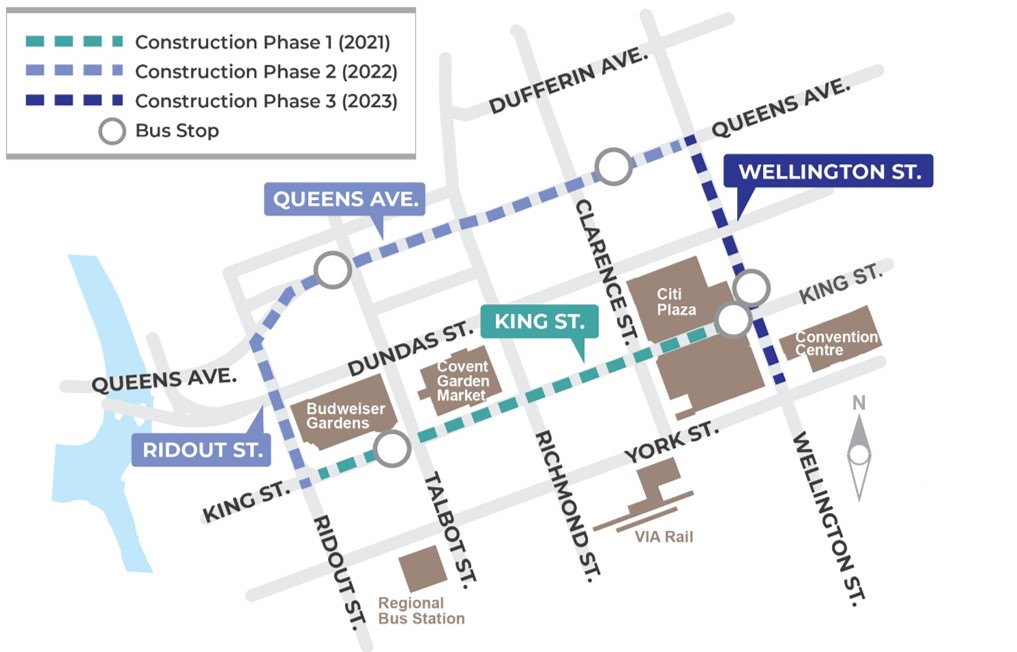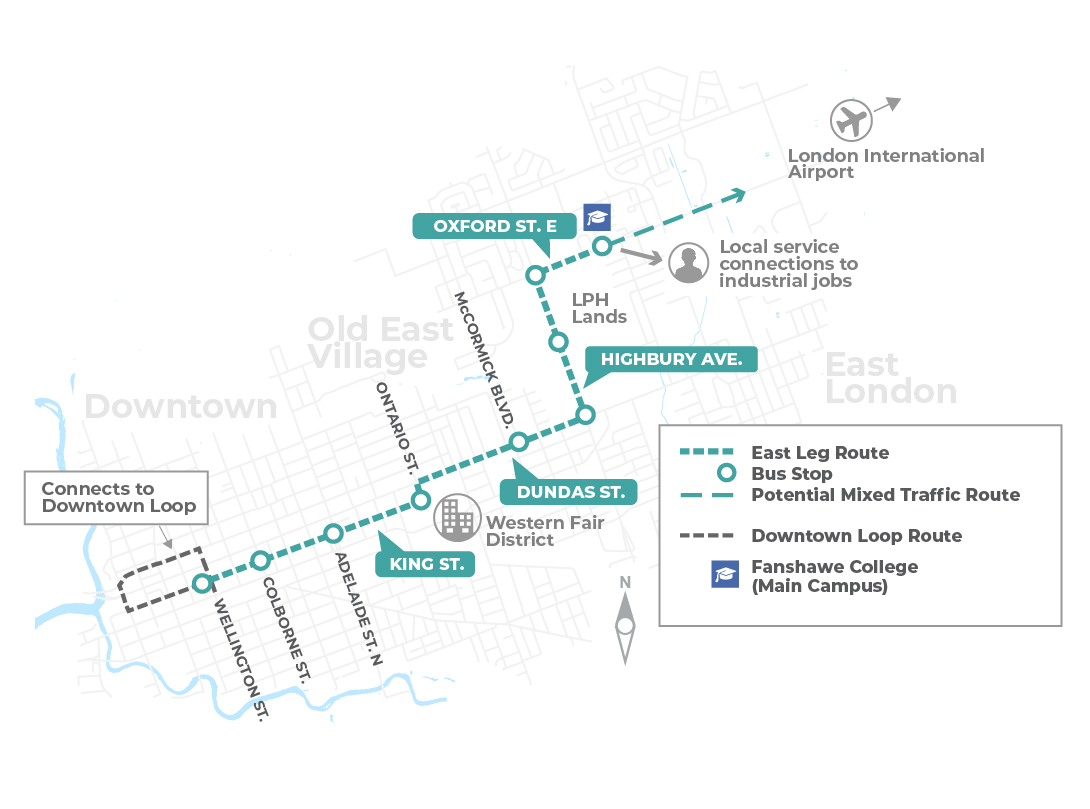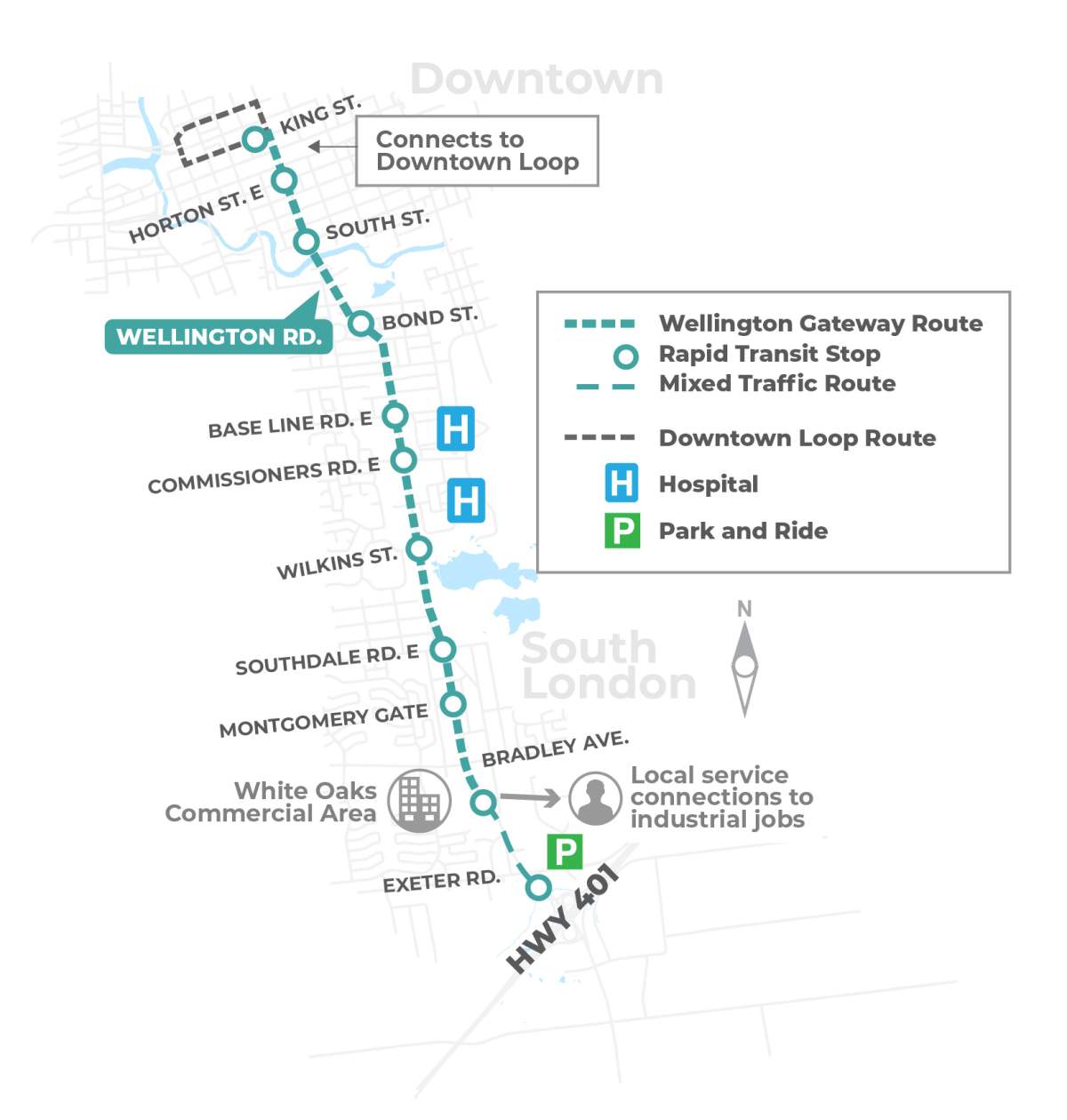A stretch of King Street in London’s downtown core reopened to traffic on Friday following months of construction work on the Downtown Loop portion of the city’s future bus rapid transit network.

The roadwork, which began in the spring of 2021 on a section of King running from Ridout to Wellington streets, marked the first phase of construction on the Downtown Loop, which will serve as the hub of the BRT network, connecting its eastern and southern legs.
Starting on Saturday, London Transit service will also resume along King Street in the downtown, with buses using a new curbside bus-only lane. The lane occupies the southern part of the roadway where a temporary bike lane previously sat.
Motorists cannot park, stop or use the lane as buses will travel down it as frequently as every 90 seconds due to the multiple routes that utilize King.
“We have signs that have been installed to alert road users of the changes, and we will have parking officers in the area to help enforce the no stopping within that lane,” said Jennie Dann, director, construction and infrastructure services for the city.
“At the same time, it’s going to be a pretty busy lane with a lot of bus traffic, so I think it’ll be very clear to people when they get down there that that’s definitely a lane for buses.”
Those driving to the area are advised to park in a nearby lot or in a designated on-street parking location. Londoners looking to score two hours of free parking can use the promo code “CORE” in the Honk Mobile app until Dec. 31, the city said.

Get breaking National news
In addition to reconfiguring King Street, the city says work completed as part of the first phase of Downtown Loop construction included upgrading old sewers and water mains, including some that were roughly a century old.
Early 2022 will see more minor above-ground work along King Street with the addition of new streetlights and upgrades to traffic signals, the city says.
Phase 2 of the loop’s construction, from York Street to Queens Avenue, is slated to begin next year, with Phase 3, running from Queens Avenue west to Ridout Street and then south to King, set to start in 2023.
Work on the eastern leg of the BRT system, the East London Link, is set to begin next year and continue until at least 2024, while work on the southern leg, dubbed the Wellington Gateway, is slated to begin in 2023 and continue until 2026.
“As we continue to build out the East London Link project to Fanshawe and the Wellington Gateway project down towards Exeter Road, once those projects come online, then you’ll start to see rapid transit service coming,” Dann said.
Together, the city says the three sections represent roughly $270 million worth of infrastructure work, including the replacement of aging sewers, water mains and other utilities, improved traffic systems and more, with funding coming from all three levels of government.
“One of the things that we’re doing with rapid transit is to be able to create those dedicated bus-only lanes that allow us to get buses out of mixed traffic and increase their frequency and reliability. It really creates an improved service that then connects in with local service to be able to improve transit citywide.”
Service on the BRT system will be handled by the London Transit Commission.
The system’s original plan included northern and western legs, however council nixed the routes in 2019 when it voted to only submit the loop and the eastern and southern legs for senior government funding.
The city is currently starting the development of its new Mobility Master Plan, a citywide review of London’s transportation and transit needs, which Dann says will provide “a great opportunity to take another look at how we want to provide both transit and traffic operations for the north and the west.”
“Overall, these projects are not just about bus lanes, it’s about creating an improved street and revitalizing the road from one end to the other,” Dann said.
















Comments